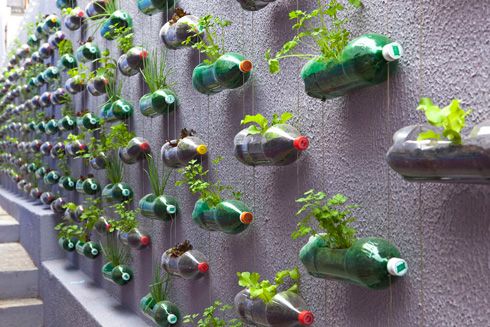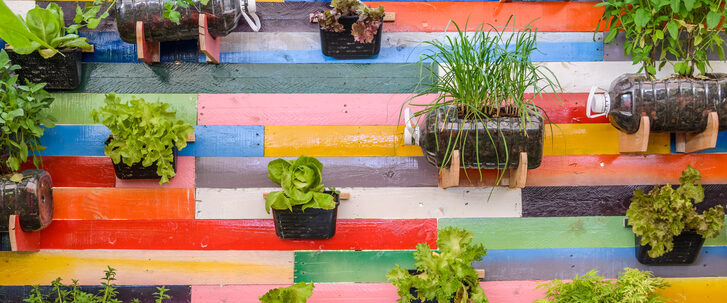Are you thinking about building an urban garden but you don’t have space? What do you think if you build a vertical urban garden?

Why is it that whenever we think of orchards, a horizontal plot planted with all kinds of vegetables comes to mind? However, not all orchards have to be like this. We can always adapt it to the available space. And if this space is limited, let’s look for alternatives!
In reality, the only thing you need to be able to build your vertical urban garden is a wall and a little imagination, as well as your desire to grow your own food.
More and more people decide to grow their own food for different reasons, such as being able to consume more organic food, reduce consumerism or contribute to caring for the environment. Whatever your reason, the truth is that in an urban garden everything is an advantage.
If you are not sure where to locate your vertical garden or how you should take care of it, don’t worry. Here are some useful tips and recommendations for your urban garden to be productive. Take note!
- Select a wall with light. The first step to build your vertical urban garden is to select the most suitable place. The most important thing is that throughout the day it gets sunlight. It is an essential requirement so that your vegetables and aromatic plants can grow.
- Check the orientation of your wall. Experts recommend that orchards face south, so grab your compass and see if that’s possible. Otherwise, don’t worry. Depending on the orientation you can grow some foods or others. For example, if your garden faces west, you can plant all kinds of vegetables, such as carrots or celery. If your wall is facing north or east, you will have to plant foods that can withstand the cold better, such as leeks or strawberries.
- Design your urban garden. The design of your urban garden is also important. Why? It is not the same if each vegetable is planted in a pot, individually, than if it shares space with other varieties. The care in each case will be different. Some plants need more water than others and there are plants that you should not grow together. Before creating your garden, think about what foods you are going to plant.
- Choose the foods to grow according to the season. When choosing what foods you are going to grow, in addition to orientation, there is another factor to keep in mind, the time of year. Do not forget that there are seasonal foods, that is, they bear fruit once a year and die, and others that are perennial, or what is the same, that do not die after bearing fruit, so you can keep them for decades. Ideally, in your urban garden you grow all kinds of plants (also aromatic) and rotate those that are in season.
- Choose the most suitable foods for each space. You may want to plant pumpkins; however, is it the best food to grow in your space? When selecting the foods to plant, you must consider various factors, such as the size and weight of the vegetables you want to grow or if they need a lot of soil for their correct growth. Everything will depend on the available space and your creativity to distribute it!
- Use compost for your seeds. An essential element for the care of your plants is to choose the best substrate for each case. One option is to create your own compost. In this way, in addition to offering the necessary nutrients to your plants, you will be taking advantage of your organic waste.
- Check the water of your plants. Plants, like any other living thing, need water to survive. Each plant requires different amounts of water, so before you start watering non-stop, check if the soil is moist.
- Change containers when necessary. Another requirement to keep your garden in the best conditions is to change the containers if they are damaged.
Dare to build a vertical urban garden in your home! Remember that, in this way, in addition to consuming the food you grow, you will also be helping to take care of the environment!




